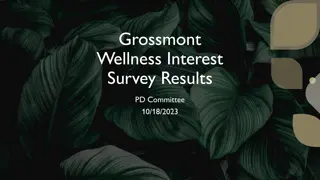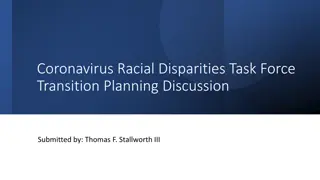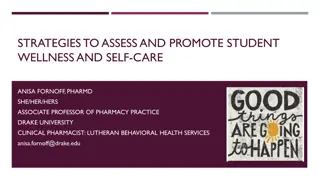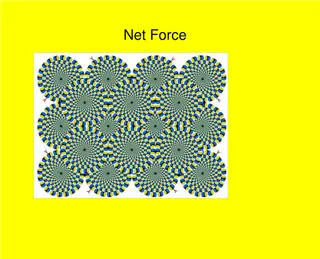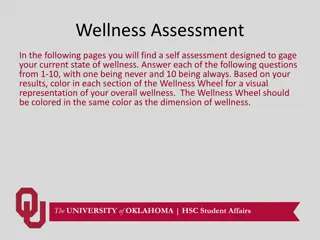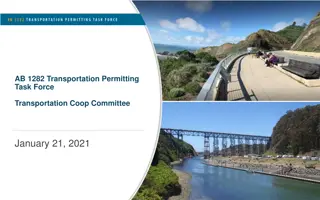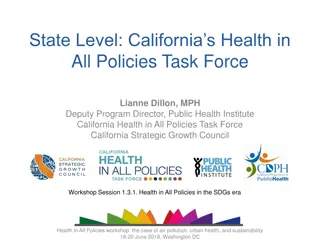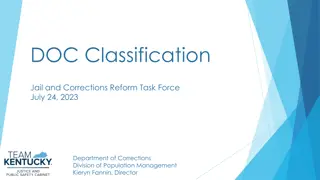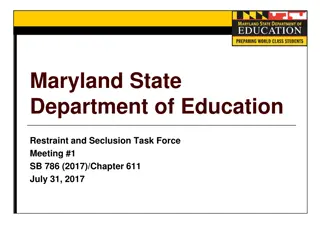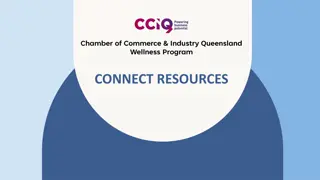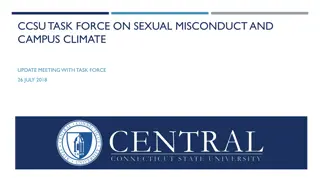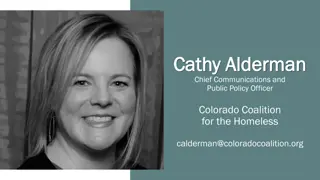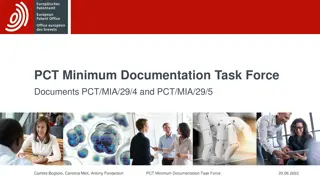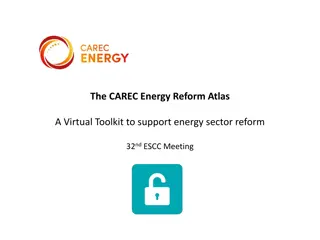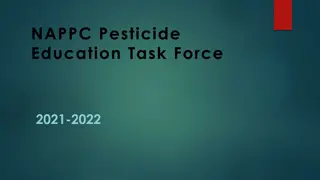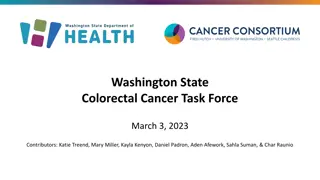Lummi Nation Health & Wellness Reform Task Force Initiatives
The Lummi Nation is actively engaging in health reform initiatives through the establishment of a task force focused on maximizing benefits from national health reform efforts. The task force aims to expand healthcare services, eliminate income barriers to access, and implement disease prevention and health promotion programs. Strategic plans include evaluating costs, determining service levels, and pursuing formal accreditation. Community involvement and policy membership are key components of these efforts. The Lummi Nation Health System offers a range of healthcare services, including ambulatory and specialty care, dental health, and behavioral health divisions.
Download Presentation

Please find below an Image/Link to download the presentation.
The content on the website is provided AS IS for your information and personal use only. It may not be sold, licensed, or shared on other websites without obtaining consent from the author.If you encounter any issues during the download, it is possible that the publisher has removed the file from their server.
You are allowed to download the files provided on this website for personal or commercial use, subject to the condition that they are used lawfully. All files are the property of their respective owners.
The content on the website is provided AS IS for your information and personal use only. It may not be sold, licensed, or shared on other websites without obtaining consent from the author.
E N D
Presentation Transcript
Lummi Nation Welcomes Health Reform Northwest Portland Area Indian Health Board Quarterly Meeting Skagit Valley Resort & Casino October 17, 2012
Establishment of the Lummi Nation Health & Wellness Reform Task Force
Purpose of the Task Force Secure the maximum benefit available from the National Health Reform Initiative consistent with Lummi members health care needs. To Seek Benefits including: Expansion of health care services to all Tribal members secured by the Lummi Nation in the1855 Point Eliot Treaty with the United Sates of America. Elimination of the barrier of income to accessing health care consistent with identified need. Establishment of Disease Prevention and Health Promotion Programs & Services.
Strategic Plan Development Evaluate Costs Determine population by collecting data from Clinic & Behavioral Health Systems Work with State to determine number and level of service provided to Lummi children, pregnant women, parents, seniors and individuals with disabilities. Identify and Estimate the cost of the uninsured Tribal Members Review and analyze all aspects of health care provided by the Lummi Government Pursue Formal Accreditation including Public Health
Community Involvement Coordinate Lummi Community Listening Sessions Identify Lummi Nation s Health Reform Public Education needs. Gather public comments about Lummi Nation Health Care Systems Plan for community review of the draft strategic plan as developed. Identify the need for community involvement in annual performance evaluation.
Task Force Policy Membership Two (2) Members of the Lummi Indian Business Council (LIBC) Three (3) Members of the Health and Family Services Commission Tribal Health and Family Services Administration, Managers and Staff Support Staff From Lummi Nation Treasurer s Division
Lummi Nation Health System Overview Lummi Nation Health Systems Service Entities Lummi Nation Ambulatory Health Clinic Physical and Dental Health Services Lummi Nation Contract Health Care Referred Care Hospitalization, Hospice, Physical, Occupational and Speech Therapy, Oral Surgeon, Orthodontics, optometrists. Lummi Nation Specialty Care Specialty Clinics, Geriatrics, Diabetic Lummi Nation Behavioral Heath Division Mental Health, Substance Abuse Lummi Nation Self-Funded Employee Health Insurance Plan
Lummi Nation Health Outreach Services Lummi Nation Schools Head Start and Day Care Center Little Bear Creek Senior Living Center Youth Academy Residential Services S eye chenT wkResidential Treatment Center Self-Funded Employee Health Insurance Plan -1200 employees of Tribal government, College and Enterprises.
Qualified Health Plans Tribes must be able to participate as providers in approved qualified health plans. Tribal leaders have tried to get federal regulators to identify Federally funded health care services as essential community service providers but have not been successful. Federal regulators have stated that they will review closely how the plans incorporate members of the I/T/U services systems.. Lummi Nation is interested in participating in Qualified Health Plans as a provider of Health Care Services.
Tribal Members & Health Care Insurance Patient Descriptors Percentage Status Number *Eligible patients - 100% All eligible patients 6,016 **CHS Eligible 53% 100 3,217 CHS Eligible 88% Lummi Nation p 2,820 CHS Eligible 47% Non-Lummi 2,799 Totals CHS Lummi & Non-Lummi 40% no insurance 2,427 Lummi & Non-Lummi 34% Medicaid 2,040 Lummi & Non-Lummi 29% Private Insurance 1,739 *Members of Federally Recognized Tribes who have had Health Services appointments at LNTHC in the last three years **CHS Eligible Patients whose assessment determined that no other sources of payment for medically necessary health care is available.
Lummi Nation Health System Lummi Nation Cultural &Traditional Knowledge and Practices Traditional Healing Skills Current Clinical & Behavioral Health Services, Specialty Care, Rehab and Recovery Services Lummi Nation Health Care System Physical, Mental and Substance Abuse Disease Prevention and Wellness Promotion Health Status and Quality of Care
System Development Components Health Services & Care Needs Program of Operations & Services Facilities for operations &services Financing for facilities & Services
Development of Lummi Nation Health Services and Care System Strategic Plan LIBC Lummi Nation Health Services & Care Needs Lummi Nation Health Care Resources Lummi Nation Comprehensive Health Care System Lummi Nation Health Commission Lummi Nation Health Reform Task Force Strategic Plan Development Strategic Plan Completion Strategic Plan Implementation
Tribal Planning Assumptions Critical planning assumptions Most tribal members will be eligible for subsidized health care insurance through the Federally Mandated/State operated Health Insurance Benefit. Most Tribal members will not see the need to secure additional health care insurance at their own expense. Most tribal members would not be able to compare plan services and costs and select one which does not duplicate services they receive from the Tribal Health Care Systems, without assistance. Most tribal members will not be aware of their rights provided by the ACA, which Limits individual tax penalties, co-pays to persons over 300% of FPL, Prohibits managed care plans, more than monthly enrollment periods Allows the I/T/U system billing of Qualified Health Plans for services provided to Tribal participants.
Identifying & Tracking Patient Income Tribes will need to add income as a major component in their health planning activities. Tribes need to track tribal member income ranges in order to successfully mange their health care cost recovery activities. Tribal Enrollment status is still critical but other categorical qualifications have been eliminated. Tribes need to develop the capability to move tribal members from Medicaid (0 to 133% of FPL) to subsidized insurance (134% of FPL to 300% of FPL) without interrupting Health Services - based on their income as a percentage of the Federal Poverty Levels.
Tribal/State/Federal Deveopment Coordination Tribes must be involved in the development of State Health Benefits Exchange serving their areas. HB2319 Washington State law authorizing the development of the State Health Benefit Exchange requires consultation with Tribes. Tribal Leaders are aware that the Federal government will create the Health exchange plans for several states which have chosen not to proceed with the development of exchanges.
Tribal Plan Component Assumptions Tribes must have the option of sponsoring Tribal members as insurance customers of Qualified Health Plans approved by the Health Benefits Exchange operating within each state. Tribes must have access to funding available to support Navigator programs. Coordinate Develop and Implement a Plan of how to utilize benefits coordinators to get people enrolled or determine eligibility for a plan Special provisions and rights of tribal members will not be part of Navigator programs designed to assist the general public. Tribes need to be able to tie participation in Health care insurance back to their own health care services in order to achieve the full primary coverage that is envisioned by the act for all Americans.


